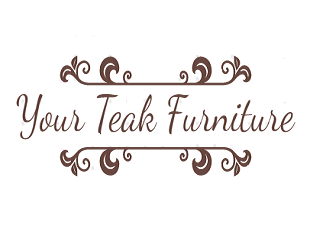People who reside in cold winter zones become familiar with how temperature fluctuations between seasons do damage to foundation soils surrounding their homes. Your roof becomes vulnerable to damage due to this recurring cycle regardless of your awareness about it. Weather conditions including high temperature changes and snowfalls combined with ice and winds lead to roofing deterioration and worsen pre existing issues.
Roof leaks together with other problems can arise because of this situation and might trigger the need for roof repairs or complete roof replacement. The roofing company Seattle WA can provide professional expertise for roof assessment and damage resolution.
The citizens residing in areas with frequent cold winters must understand what roof damage looks like when freezing and thawing occur. This article presents a clear description of freeze-thaw cycles together with methods for spotting related roof damage and yearly guidance for home protection.
What Is a Freeze-Thaw Cycle?
Water that melts from snow due to spring temperatures enters small spaces or broken areas of your roof. Cold temperature drops create expansion of moisture through freezing which occurs during frost events. Water easily accumulates in the opening formed between flashings and shingles which leads to continuous deterioration of the situation. The roofing Seattle WA shows high vulnerability to seasonal variations thus requiring regular checking
Changes in weather that produce temperature variations across the season create what we call freeze-thaw cycle which damages your roof system. The repetitive expansion and contraction ultimately leads to roofing material damage leading to impaired shielding of your home and thus shorter lifespan.
Understanding the Freeze-Thaw Cycle
Water and moisture exist in the air as a constant presence while moisture successively finds its way inside all available materials. The declining temperatures cause water molecules to expand thus generating strain on materials where water seeps in. If that’s a basketball—no problem! Frozen precipitation will encounter minor flexibility from the material which assists with weathering through the melting and refreezing process. Concrete and asphalt shingles designed without flexible components demonstrate this fact because freezing water inside these rigid surfaces generates extensive cracks during its expansion phase. Your roof shingles undergo frequent cycles of weather expansion and contraction multiple times weekly that eventually leads to permanent structural damage.
The Freeze-Thaw Cycle Produces Harms to Your Roof System
Ice Dams
The formation of ice dams occurs through the application of freeze-thaw cycles. The formation of ice blocks near the roof edge creates obstruction to proper water drainage. The presence of ice dams leads to both gutter damage and their complete displacement resulting in additional problems. The ice dam buildup allows water accumulation that freezes in place therefore creating pressure which leads to roof leaks that endanger your home’s ceiling structure together with wall and insulation damage.
Weakened Roofing Materials
Your home will suffer more severe harm as the freezing-thawing cycle persists over time. Quick transition from early winter to late spring brings rising warm temperatures during the day which transform into cold nighttime conditions. Various sections within your roof suffer the effects of these weather conditions which result in cracked shingles and membranes or flashing and accumulated water in gutters and decking. Roofing contractors Seattle have specific experience with such problems and can provide expert solutions to maintain your roof integrity.
Mold and Mildew
Mold and mildew develop beneath shingles as well as inside households because of the freeze-thaw cycle.
Signs of Damage to Look For
- Discolored ceilings due to leaks
- A deteriorated condition of flashing along the chimney and eaves and vents that fails to seal material gaps creates roof damage.
- Water ingress occurs through the formation of gaps in between the different layers of your roofing materials.
- The improper spacing of shingles indicates the water and ice expansion has moved them out of place and weakened your roofing structure.
Effective Roof Protection Practices
Regular Inspections
You should perform periodic inspections of your roof at least two times per year. You should inspect your roof for any evidence of damage and leakages or shingle deficiencies. The early discovery of roof problems creates the chance to handle problems before they escalate into major damages. Neighborly examinations of your roof should be initiated through direct contact with a local trustworthy roofer in case of suspected damage.
Gutter Maintenance
Regular gutter maintenance should involve you removing all debris from your gutters. The accumulation of debris in gutters results in water flowing over the edges which causes roof damage and enables leaks to develop. Property owners should make it a habit to remove all leaves along with twigs and any other blocking objects from their roofs. Ponding water along with related maintenance problems is something everyone wants to avoid because such issues can be prevented.
Proper Attic Ventilation
Your attic should have proper ventilation since it protects against heat accumulation and moisture build-up. Proper ventilation both extends roof lifespan and protects your roof from damage to shingle material and mold growth.
Trimming Overhanging Branches:
Cut tree branches that extend toward your roof so they will not damage the roof material or create dangerous storm-related hazards.
Professional Roof Cleaning:
The thorough removal of roof debris should be done by hiring professional cleaning experts. Experienced professionals will perform safe removal of algae moss or lichen since these organisms can break down your roof surface materials throughout time.
Addressing Roof Damage with Professional Help
The correct solution for handling damaged roofs requires professional intervention.
Do not take on the repair of ice dams or detectable leaks by yourself after freeze-thaw cycle damage appears on your roof or house. Since only trained roofing professionals possess the expertise and correct tools needed for ideal results you should contact one to handle roofing work.

